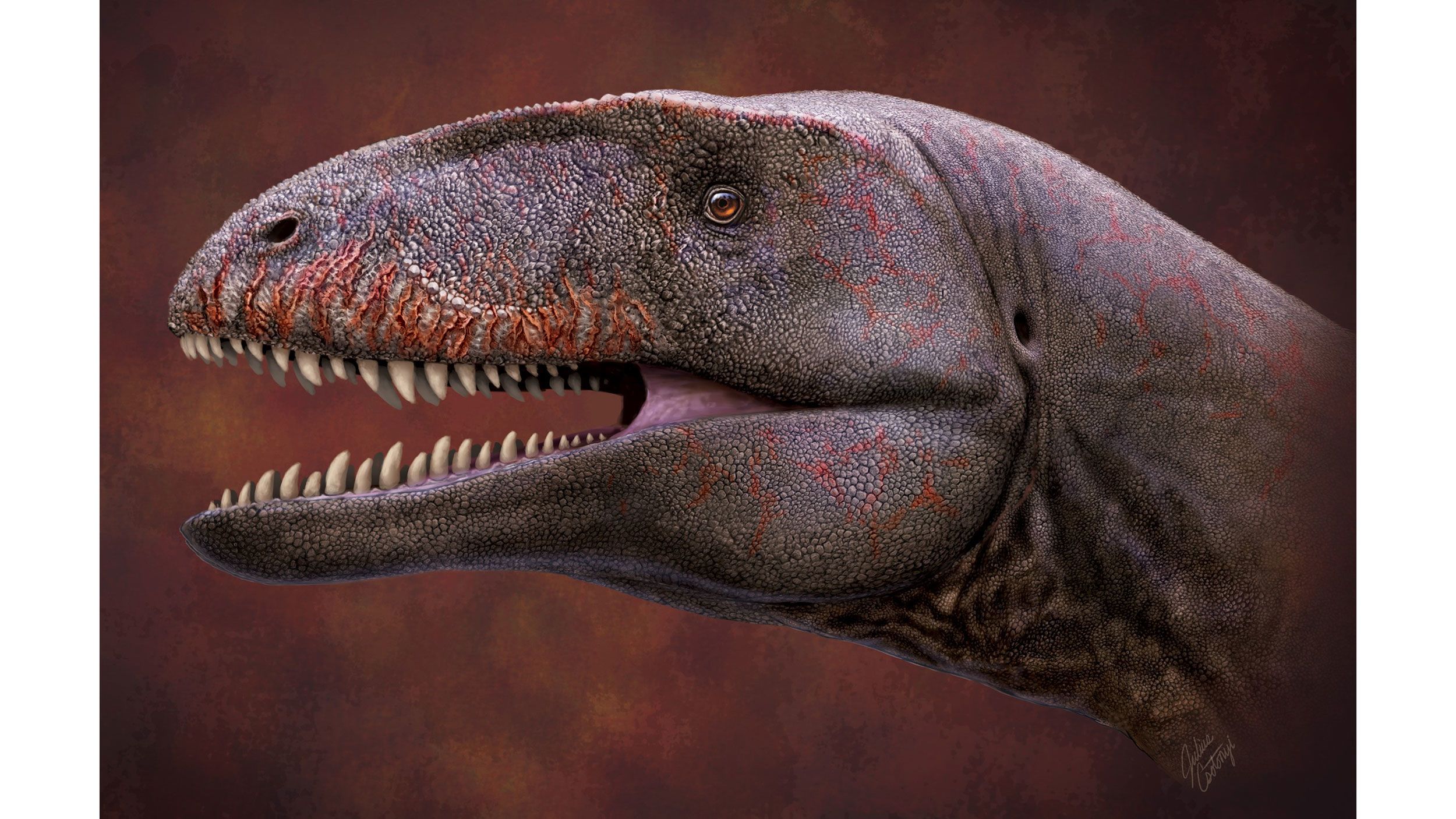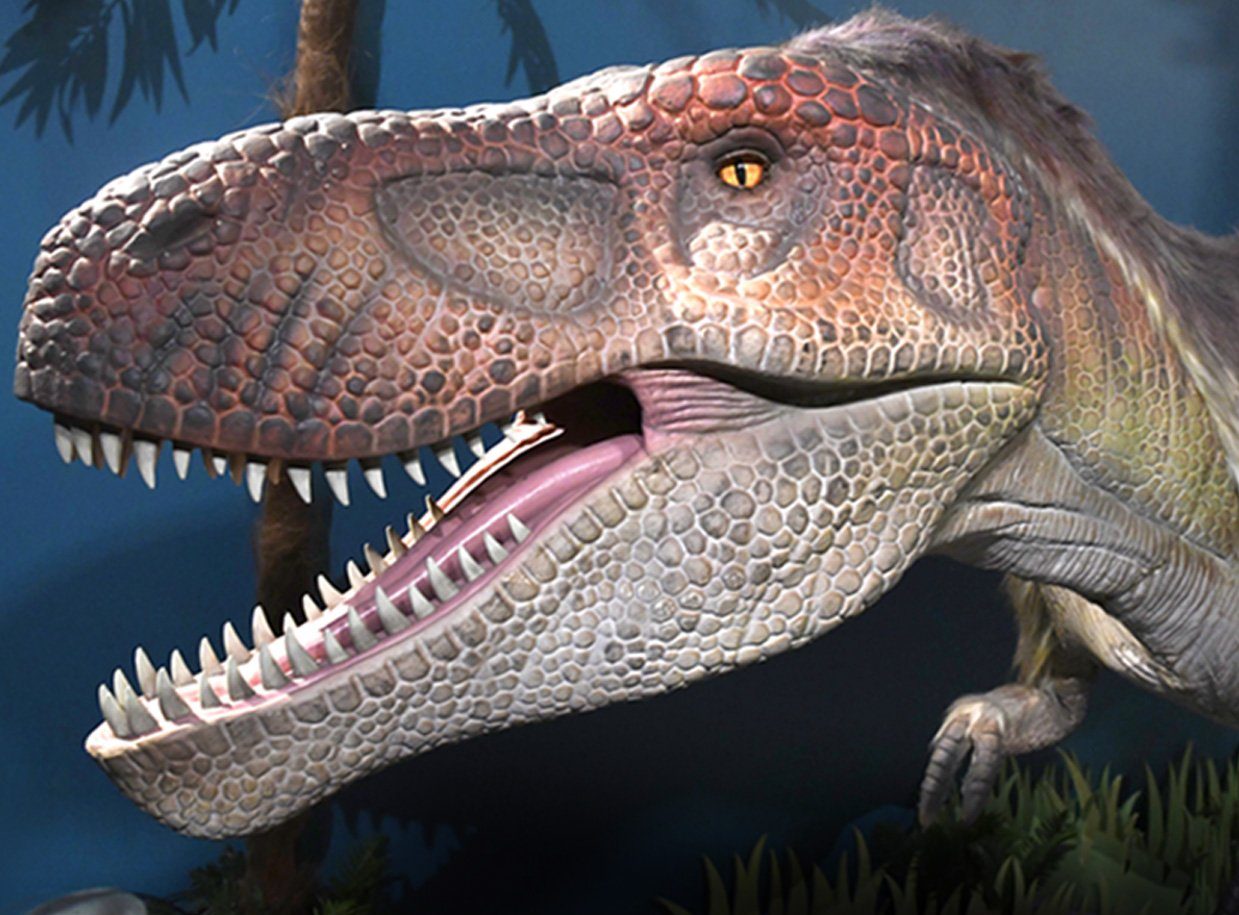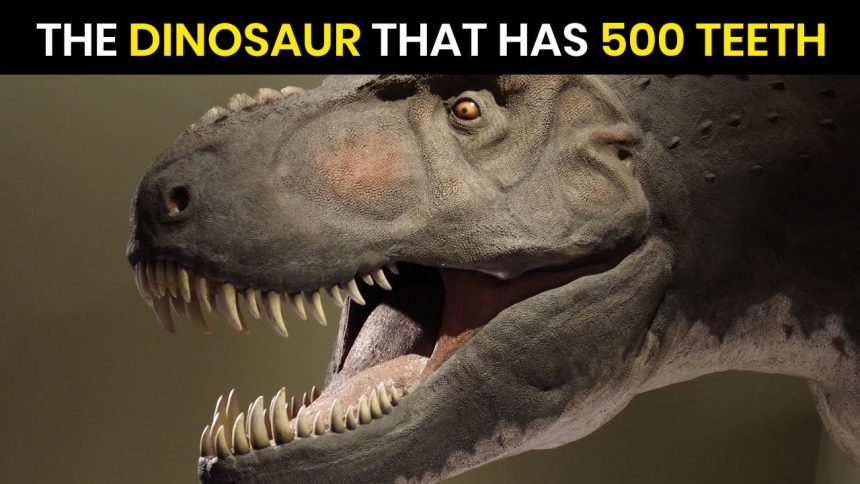Are you prepared to take a trip into the world of dinosaurs and experience a toothy adventure? Imagine a creature with not dozens or hundreds of teeth, but 500! You heard right! 500 teeth. But which dinosaur has 500 teeth?
Nigersaurus is an incredible dinosaur with 500 teeth. This sauropod, with its mouthful of thin, tightly-packed teeth, roamed ancient landscapes and grazed on low-lying plants.
Do you want to learn more about Nigersaurus? Let’s learn more about Nigersaurus.
What Dinosaur has 500 teeth?
Nigersaurus is a dinosaur with a long neck that was discovered three years ago. Dino Game Unblocked
Feeding habits and dental adaptations of Nigersaurus
Anyone familiar with braces will attest to the importance of tooth arrangement in dental function.
All tooth columns in the Nigersaurus dental battery, the long-necked dino, were perfectly aligned. Its teeth are positioned in the front of its mouth, following the slightly curved edge of its muzzle. This makes it stand out from other dinosaur species.
Nigersaurus’ unique dental structure made it different from other dinosaurs in terms of dietary requirements. Nigersaurus’ relatively small size and short neck make it unlikely that it ate treetops. Evidence suggests that Nigersaurus ate primarily at ground level. This is similar to the eating habits of modern cows.
Nigersaurus gets its name from Niger, a country in West Africa where fossils were discovered. When Nigersaurus roamed Earth, it was characterized by forests, braided river systems, and the giant crocodile cousin, Sarcosuchus.
Nigersaurus’ broad muzzle, combined with its distinctive teeth was perfect for scooping low-lying plant life such as horsetails and ferns. The dinosaur’s abundant teeth would have easily shredded through the vegetation.
A feeding strategy like this can be detrimental to dental health, unless there is a constant supply of replacements teeth. Nigersaurus’s eating habits likely caused rapid wear to its crowns. It was fortunate to have a constant supply of new teeth. In 2013, a study in the journal PLOSOne suggested that Nigersaurus replaced every tooth with a new one in just 14 days.
History and Discovery of Nigersaurus
Nigersaurus has evolved in both its discovery and our understanding over the years. The first fossils that were attributed to Nigersaurus in Niger were discovered during a French expedition in 1960s and 70s. The fossils, which were fragile due to the skull and skeleton’s fragility, were often badly preserved and disarticulated. The Nigersaurus remains were not discovered until expeditions led in 1997 and 2000 by American paleontologist Paul Sereno. This provided more information about its anatomy.
Sereno, along with his colleagues, officially described and named Nigersaurus in 1999 based on newly discovered specimens. The genus Nigersaurus refers to its country of discovery. Its specific name, taqueti honors Philippe Taquet who organized important paleontological explorations in Niger. The National Museum of Niger houses the holotype, which is a partial neck and skull.
Sereno, and Jeffrey A. Wilson detailed the Nigersaurus skull and feeding adaptations. This was published in 2005. In 2007, a more thorough examination of the skeleton based on an earlier specimen was published.
The National Geographic Society displayed these fossils along with a reconstructed mount of a skeleton and a head and neck model. Nigersaurus’ unique appearance, which resembled a “Mesozoic Cow,” attracted attention. Comparisons were made with Darth Vader and vacuum cleaners, among other unconventional analogies. The teeth of Nigersaurus, which are similar to those of other dinosaurs found on the Isle of Wight, Brazil and elsewhere, could belong to titanosaurs or related species.
Nigersaurus’ study has helped us better understand sauropods. However, the lack of intact skulls or articulated skeletons is still a problem. Nigersaurus has been the subject of many discoveries and studies. These have given us valuable insight into its unique anatomy and feeding habits.
Head position and posture of Nigersaurus – Insights from inner ear analysis
Experts have speculated about the overall posture of Nigersaurus based on its feeding posture, which has its head pointing downward. Paul Sereno, along with his team, conducted a thorough examination to reconstruct the internal structure of Nigersaurus’ skull. They were able to determine the orientation of the LSC (lateral semicircular channel) in the inner ear. This is a critical component for maintaining animal balance.
Sereno, his colleagues and their observations of Nigersaurus’ LSC orientation led them to propose a hypothesis that suggested the dinosaur walked with the snout angled towards the ground in an angle of 67 degrees. This pose can be compared to a teenager with a drooping head.
Other researchers, however, have disputed this statement. In 2009 and 2013, studies conducted indicated that the LSC position cannot be used to determine the typical posture of a sauropod. Further research is needed to solve the mystery of Nigersaurus’ posture. We would love to have a time-machine.
Overview of Nigersaurus
Nigersaurus was a large sauropod dino that roamed Earth 112 million years before the Cretaceous period. This article examines the fascinating features of Nigersaurus and its discoveries, including its unique tooth structure.
Discovery and Naming
Nigersaurus Taqueti was discovered in 1976 by French paleontologist Philippe Taquet during his expeditions to Niger. It was then extensively excavated in 1999 by American paleontologist Paul Sereno. The name “Nigersaurus”, which refers to the species’ origin in Niger and “taqueti”, is a subspecies of this species.
Habitat Size and Type
Nigersaurus, a herbivorous dinosaur measuring 30 feet long, lived in what is today the Sahara Desert of Niger. It lived alongside other dinosaurs, such as the herbivorous Ouranosaurus and the carnivorous Suchomimus.
Unique skull structure and teeth
The skull of Nigersaurus makes for an interesting subject of study. It had a delicate skull and a mouth that was angled downwards. This allowed it to graze on low-lying vegetation. The snout had a wide, straight edge and was accompanied by a remarkable feature: over 500 teeth that were constantly replaced.
Morphological Quirks
Researchers examined the skull in detail and used the findings to accurately reconstruct the animal’s posture. The vertebral column of the dinosaur had very little bone, which is a distinct morphological feature.
Museums
Nigersaurus is often displayed in museums due to its unique characteristics. This attracts the attention of children. This dinosaur is proudly displayed at the National Geographic Museum, Washington, DC.
Nigersaurus stands out from other dinosaurs with its distinctive skull and 500 teeth. Herbivorous, with a fragile skull and special dentition to browse plants close to the ground, it is a fascinating topic of study for scientists and public alike.
Scientific classification: the Dinosaur With 500 Teeth

Nigersaurus, at first, was placed in the Dicraeosaurus genus. Sereno reclassified it as a diplodocoid rebbachisaurid. Sereno’s reclassification of Nigersaurus was based on his observation of Nigersaurus’ shorter neck, which is an identifying characteristic for the rebbachisaurids diplodocoids group.
- Kingdom :Animalia
- Chordata: Phylum
- Genus: Nigersaurus
- Clade : Dinosaurs
- Species: Nigersaurus taqueti
- Clade: Saurischia
- Clade: Sauropoda
- Clade: Sauropodomorpha
- Diplodocoidea, a superfamily of HTML0
- Family: Rebbachisauridae
- Subfamily: Rebecchi Suriname
What Kind of Dinosaur Is Nigersaurus?
Nigersaurus was a rebbachisaurid Sauropod that lived in the Niger woodlands during the middle Cretaceous Period, around 115-105 million years ago. Nigersaurus was first discovered in 1976. However, it was not until 1999, after the discovery of more and better preserved remains, that the dinosaur received its formal name, Nigersaurus.
The genus, which means “Niger Reptile,” pays tribute to the country of origin. However, the specific name honors paleontologist Philippe Taquet who made the first discoveries.
What is Nigersaurus’ biological family?
Nigersaurus is a member of the Rebbachisauridae family. The Rebbachisauridae is a family of herbivorous, long-necked dinosaurs who lived in the Mesozoic Period. The elongated necks and relatively short tails of these dinosaurs make them stand out. They also have specialized teeth that are designed for browsing vegetation.
The dinosaurs were found all over the world. They are known to have lived in Africa, South America and Europe. Nigersaurus, one of these well-known dinosaurs, is a member of this family.
What does the dinosaur with 500 teeth eat?
Nigersaurus primarily ate low-lying plants. The compact head and long neck of Nigersaurus allowed it to reach plant sources beyond the reach other dinosaurs.
Nigersaurus, initially thought to be a herbivore with a special diet, now appears to share dietary similarities to other sauropods. The small pit-like marks on the parallel teeth suggest a grazing behavior.
These tooth marks are common in animals that graze on the ground level flora. This includes ferns and weeds. Nigersaurus lived in a time when grass was not available. This dinosaur, with its 500 teeth, survived by eating horsetails, flowering (angiosperm) plants, ferns and other plants at ground level.
Nigersaurus is similar to modern flamingos. The feeding habits of pink birds are similar to those of Nigersaurus.
Sereno suggests that Nigersaurus also ate small conifers, and possibly other plants, found below ground. Nigersaurus’ teeth were oriented laterally, making it difficult for the animal to chew plants.
It was necessary to have 500 teeth in order to replace teeth that were worn out or decayed. Nigersaurus’ dental replacement rate is far higher than that of other herbivorous dinos.
Where did Nigersaurus live?
Nigersaurus lived in the Elrhaz Formation, within the Tenere Group located in Gadoufaoua (Republic of Niger). This region was characterized by fluvial sandstones, with low elevations. There were also intermittent dunes of coarse to medium grain size.
The area became a floodplain during the Early Cretaceous Period. The marshy area provided abundant ground-level vegetation, which ensured that Nigersaurus had enough food to survive.
Which predators did Nigersaurus possess?
Nigersaurus was not immune to predators, even though it had a unique adaptation and an imposing size.
Carcharodontosaurus and Spinosaurus were among the carnivorous dinos that lived in this environment. They posed a significant threat to herbivores such as Nigersaurus. The presence of Sarcosuchus, a gigantic crocodile, increased the dangers even for those approaching water bodies.
Nigersaurus probably used several defensive mechanisms to protect itself. The relatively smaller size and low profile of Nigersaurus compared to that of other sauropods could have made it less noticeable to predators. Nigersaurus’s herding behaviour, which is similar to that of many sauropods in general, may have provided collective protection. Individuals could increase their safety by remaining in groups and maintaining vigilance. They would also deter predators with sheer numbers.
This strategy of protection is similar to that of animals like the buffalo and wildebeest of today, who rely on their herd’s safety in environments with predators.
Nigersaurus could have also used its long, whiplike tail to defend itself. The tail of Nigersaurus was not as strong as those of other sauropods, such as Apatosaurus and its relative Diplodocus. However, it could have still served as a weapon to deter predators.
What are the close relatives of Nigersaurus?
Nigersaurus was closely related to several sauropods in the Rebbachisauridae group. They included Rebbachisaurus, a Moroccan dinosaur, Demandasaurus, a Spanish dinosaur, and Limaysaurus, an Argentinean.
The skeleton of these closely related dinosaurs shared many similarities with Nigersaurus. These included similar skull and vertebral shapes. These features indicate that they are closely related and show their evolutionary connection.
Do Other Dinosaurs have 500 Teeth?

No other dinosaur has exactly 500 teeth. Nigersaurus, despite its 500 impressive teeth, is not the only dinosaur that has such an amazing dental arrangement. Hadrosaurs, a dinosaur group, were known to possess more teeth than Nigersaurus. Here are a few examples:
- Edmontosaurus The duck-billed hadrosaur was adorned with a dental system of over 1,000 teeth.
- Shantungosaurus : A close relative of Edmontosaurus. This large duck-billed dino also had hundreds of teeth.
- Lambeosaurus Lambeosaurus is another hadrosaur, with a hollow crown on its head. It also had a dental battery of hundreds of teeth.
- Corythosaurus Similar to Lambeosaurus and with hundreds of teeth, Corythosaurus is a crested Hadrosaurus for processing plants.
- ParasaurolophusKnown as a dinosaur with hundreds of teeth, Parasaurolophus was characterized by its long, curved, curving head crest.
- Gryposaurus A duck-billed hadrosaur with a prominent nasal arches and over 500 teeth.
- Maiasaura : Dubbed the “good Mother Lizard” because of evidence of parental care and its dental battery, Maiasaura is another hadrosaur that has hundreds of teeth.
Diplodocus is the closest competitor to Nigersaurus, having over 100 teeth. Ceratopsians are known for their beaked mouths and elaborate frills. However, they have fewer teeth.
Triceratops, for example, had approximately 200 teeth, 40-60 on each side. Ceratopsians did not usually have more than 500 teeth, despite their impressive dental arrangement.












